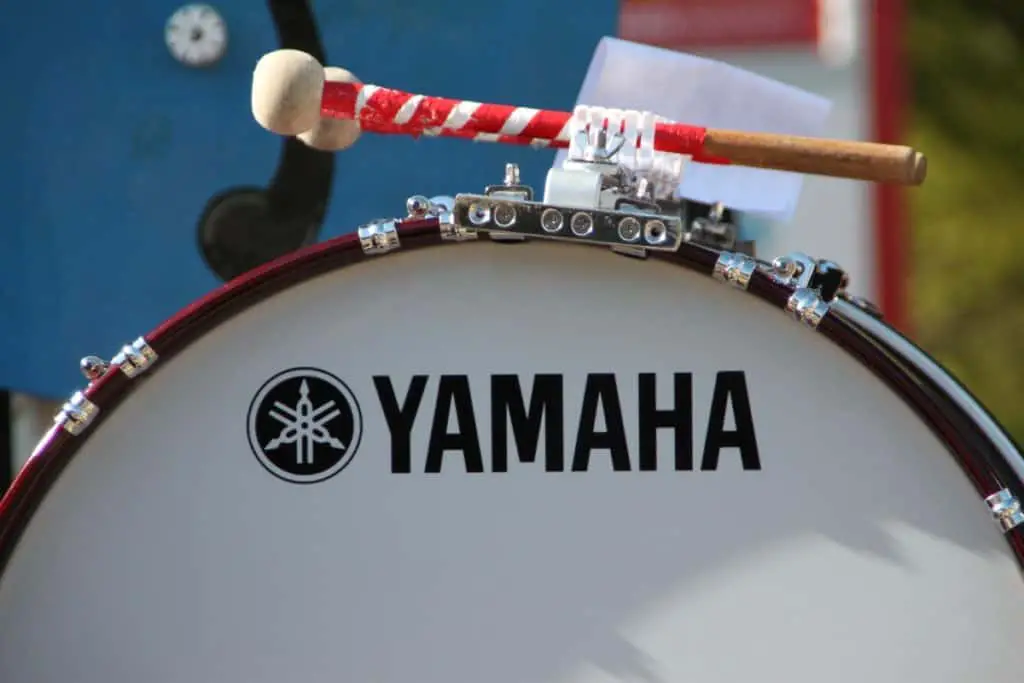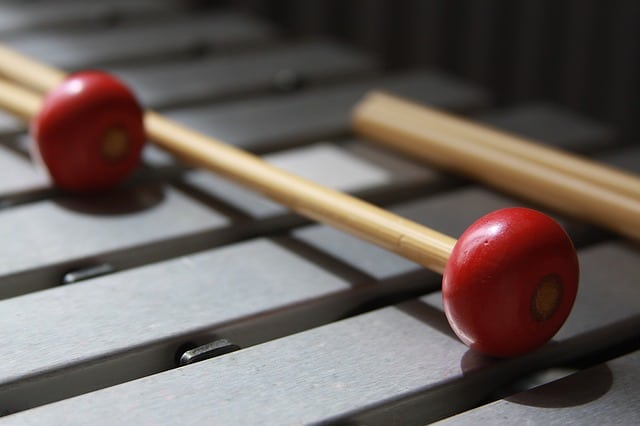What Percussion Instruments Help Keep The Beat?
Almost all styles of music have a beat. It is the base on which almost all musical composition is created. A beat is a basic unit of time, on which the notes are placed so that each musician remains synchronized with the others playing different instruments. There has to be someone, or something keeping the beat and it usually comes from the percussion section. So what percussion instruments help keep the beat?
- Drums (Various)
- Tambourine
- Cymbals
- Claves
- Shakers
- Hand Claps
This is but a small list of percussion instruments that can help keep the beat.
What the percussion instruments actually do, is play TO the beat and in doing so, begin to create the rhythm of the music. I’m going to dive into some of these instruments and look in a little more depth with some examples.
Drums
The bass drum or kick drum as it is sometimes referred produces an indefinite pitch lower than most other instruments in a band. You will rarely find a rock or pop music band without a bass drum, or an electronic representation of ‘bass’.
How important is bass drum?
The bass drum is the most important beat-keeping instrument in any band, from small to huge ensemble. The bass directs the pace and tempo of the music and in modern dance music is the beat upon which the tempo is set.

In military marching bands, the tempo of the marching soldiers is dictated by the bass. It helps everyone keep in time and instep
You can use a single drum to keep the beat and it would be just the beat. By adding in other percussion instruments to the beat, on the down or up, you begin to create the rhythm. The ‘feel’ of the music and what determines, along with the melody and harmony, why people like the music and have a preference for different musical styles or genres.
Tambourine
The tambourine holds far more power than it’s basic look might portray. The versatility of the tambourine is its power.
The best example I can give for this is a video I discovered where the Tambourine is keeping the beat and the drums are playing along.
When the tambourine keeps beat, it is doing so much more. It will put weight behind a rhythm with the vast array of options of how to play. When playing to, or with the beat, the tambourine can accent the beat with a range of its percussive abilities. From the head, the jingles, or playing the rim, the tambourine has so much more to offer the beat than many people often realize.
Cymbals
The most obvious example of cymbals being used to keep the beat would be in traditional jazz music, where the Hi-Hat provides a subtle but obvious beat for the ban to work around.
Even when Jazz sounds like it is going off doing something completely on its own, the swing cymbal beat is almost always there.
Cymbals play an integral part of any drum kit, with some rock band drummers setting up an incredible array, to add crispness and crashes at a whim.
Cymbals play a more important role than just keeping the beat, however. They help to build the overall drum beats and create the feel, setting the mood.

Claves
Claves are a simple percussion instrument but do not allow simplicity to cloud the tradition and musical importance of them.
Indeed, how many times have you seen drummers crossing and hitting their sticks? This is merely an imitation of playing the claves. [but a bit easier than putting the sticks down and picking up the claves!]
Anyway, hugely important in Latin American and African music where the beats can be more complicated the claves play an integral part in helping to keep the beat.
I could have chosen to share many clave videos, but I chose this one due to the simple passion in this video for the instrument
The great thing about Claves is many people reading this may have played them in the past. They are an integral part of every music classroom, and whilst you knew what they were from school days, had in between forgotten.
Shakers
Shakers can come in various shapes and forms and add color and depth to the beat and played correctly, can provide the beat.
Often a forgotten percussion instrument, or used off-beat, the shaker plays an integral part of the overall beat wherever, and whenever it is played.
Hand-Claps
Any unpitched sound can be percussion, I am sure this is something that you have learned or understand.
As children we would have possibly been keeping a percussive beat without even knowing in the had clapping games we played.
Hand clapping is used as a beat keeper in various forms of music, but perhaps none quite so important than in Flamenco where it is the lead percussion.
As opposed to clapping along with the beat, the hand-claps in Flamenco are slightly more complicated but keep the beat all the same.
Percussion Keeping the Beat
The percussion family is the most important part of beat keeping in music bar none. The snare drum or the glock, it doesn’t matter, percussion is the backbone of almost all music.
In the orchestras you’ll rarely find a Timpani missing, a pitched percussion drum in fact, although not as often found to be the time or beat keeper.
Generally, the more simple the percussion instrument the more likely it will be found keeping the beat, but the same token, you will almost always find unpitched musical instruments, doing this job rather than a pitched percussion instrument.
More Percussion Information.
Here are a few suggestions for more percussion reading here on the cool percussion website.
Percussion instruments anyone can play – For information on some interesting and fun percussion instruments that are easy to play this guide will point you in the right direction and perhaps help you choose.
Can Anyone Play Tambourine – I am a bit of a tambourine and Pandeiro fan, so this is a section on playing the tambourine and which are a good choice for getting started.
Tambourin Care Guide – If you already own a Tambourine and things might be looking a little shabby then you might want some tips on how to best look after our instrument.
Tambourine vs Pandeiro – An interesting comparison between these two instruments, and how they differ. How they are used for different music and which one you should choose if you are considering buying an instrument in this class.

![Best Percussion Instruments For Kids [That you can play too]](https://cdn-0.coolpercussion.com/wp-content/uploads/2020/09/woman-4010110_1920-768x512.jpg)
![[Answered] Is a Piano a Percussion or Stringed Instrument?](https://cdn-0.coolpercussion.com/wp-content/uploads/2020/09/piano-3957653_1280-768x513.jpg)


